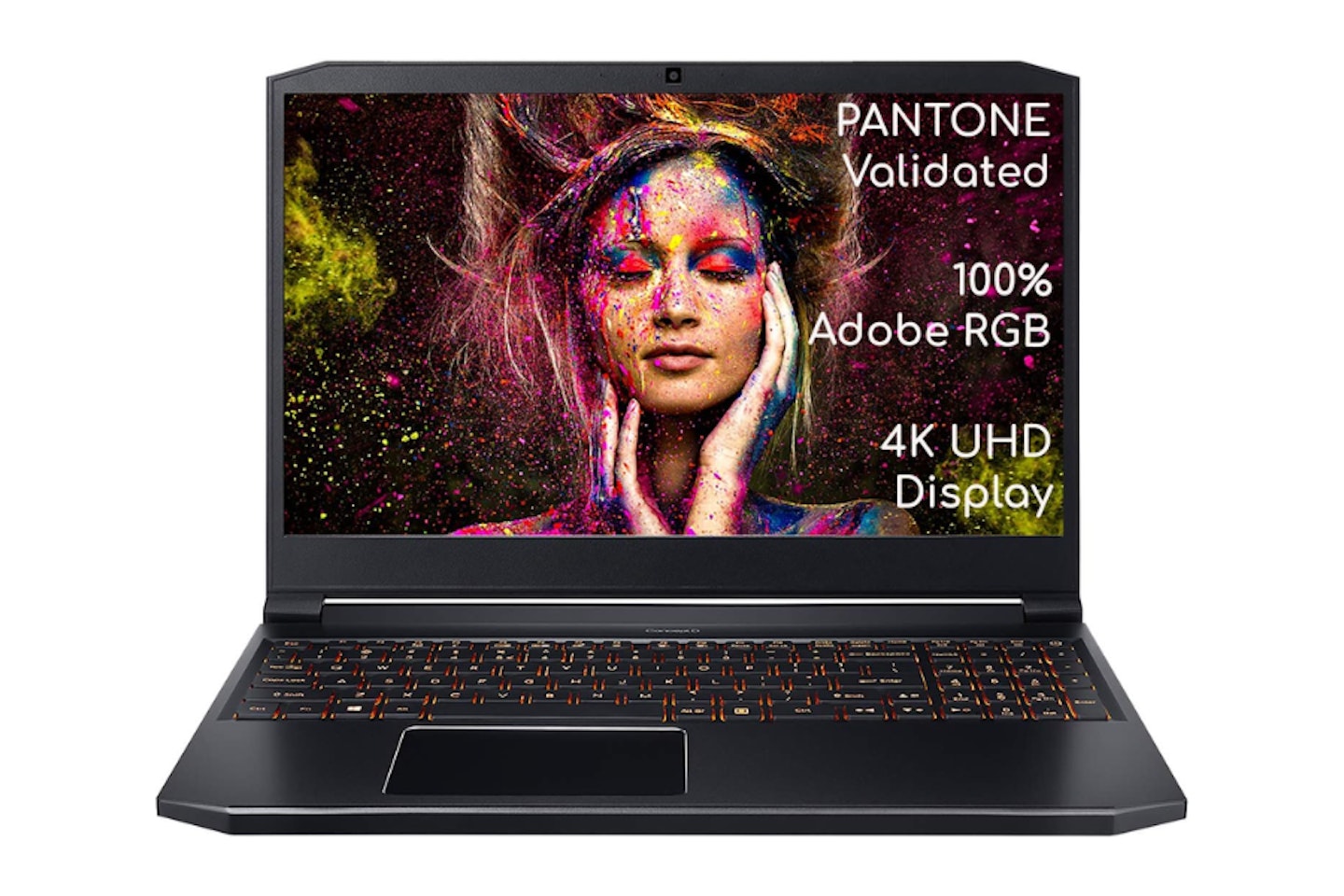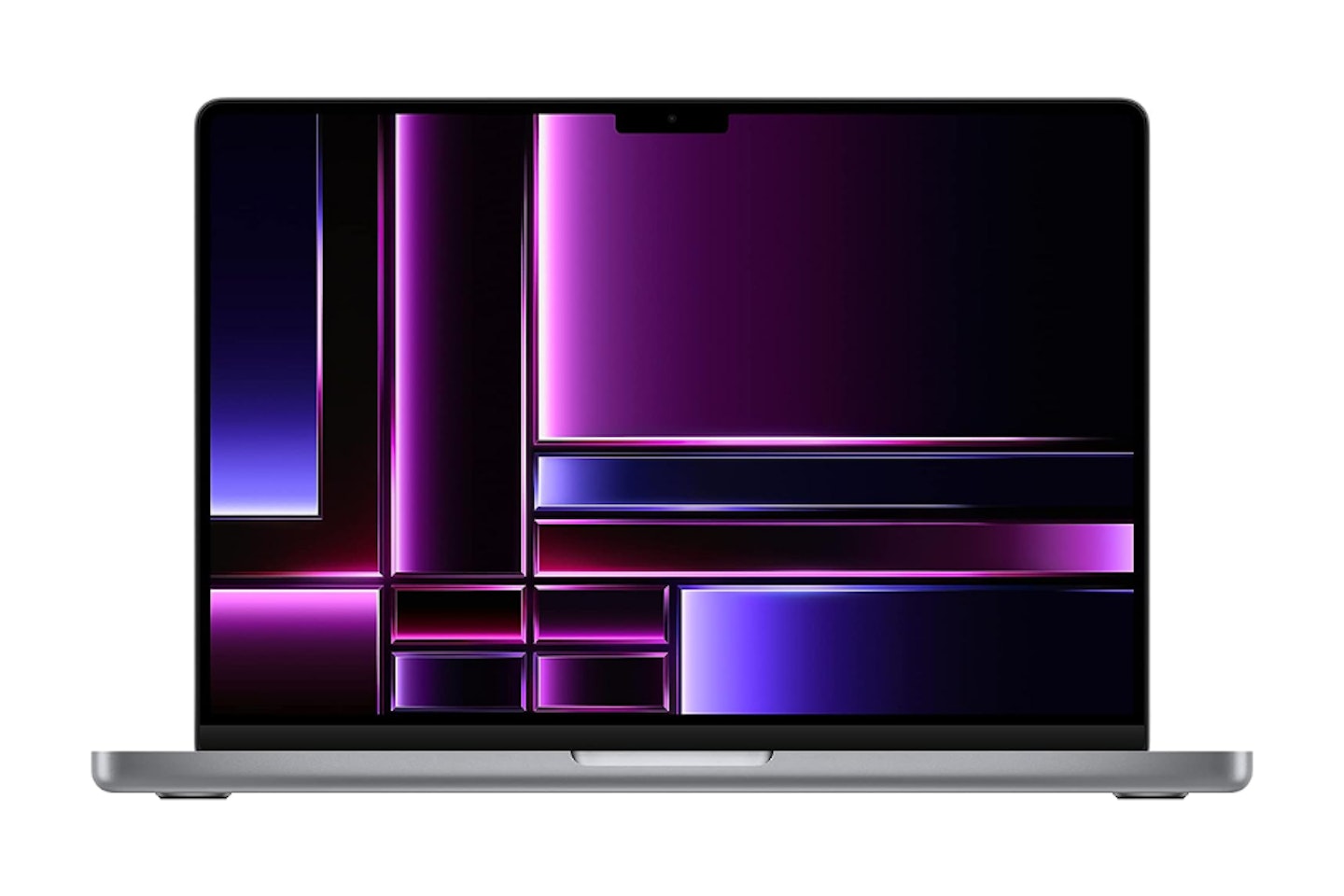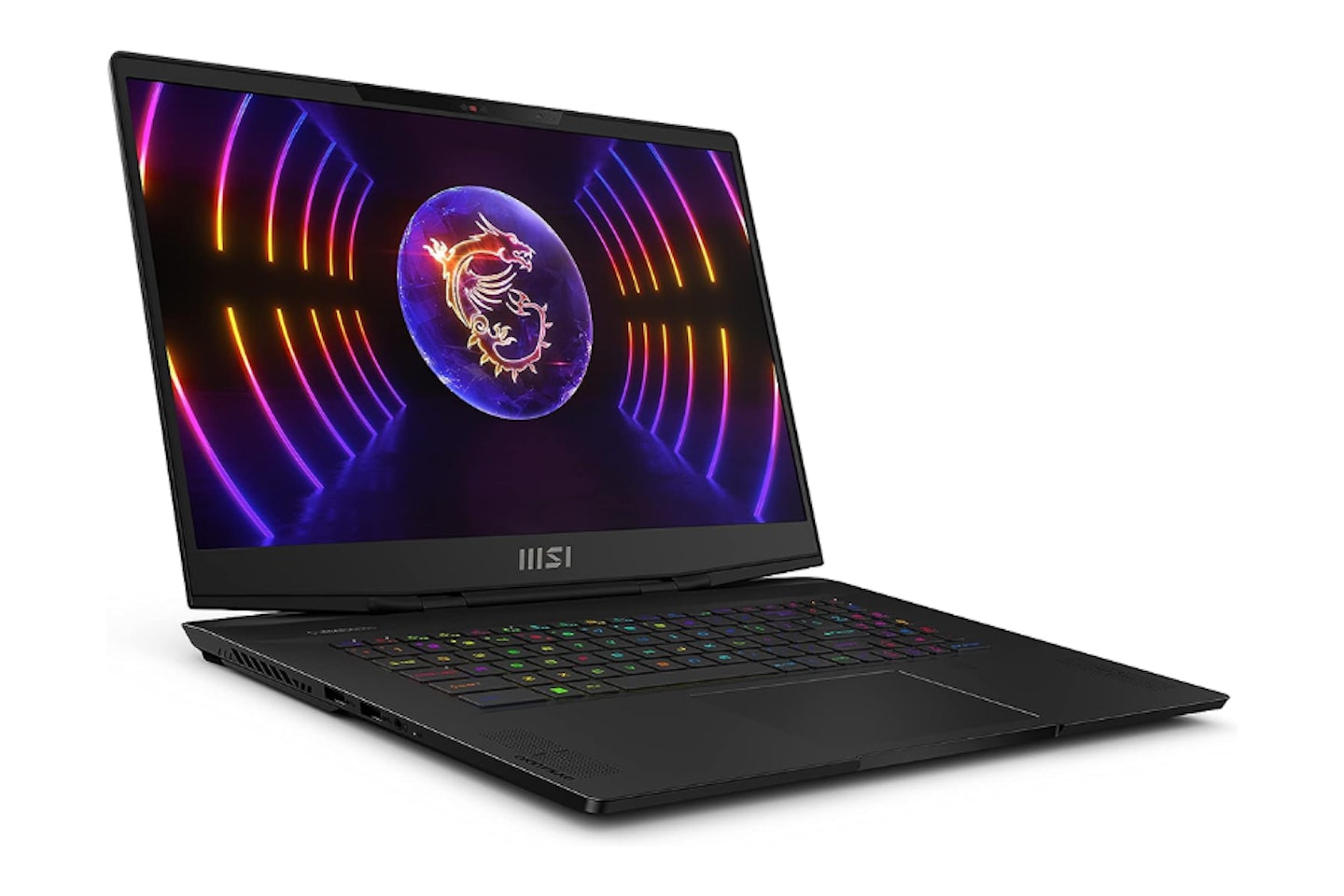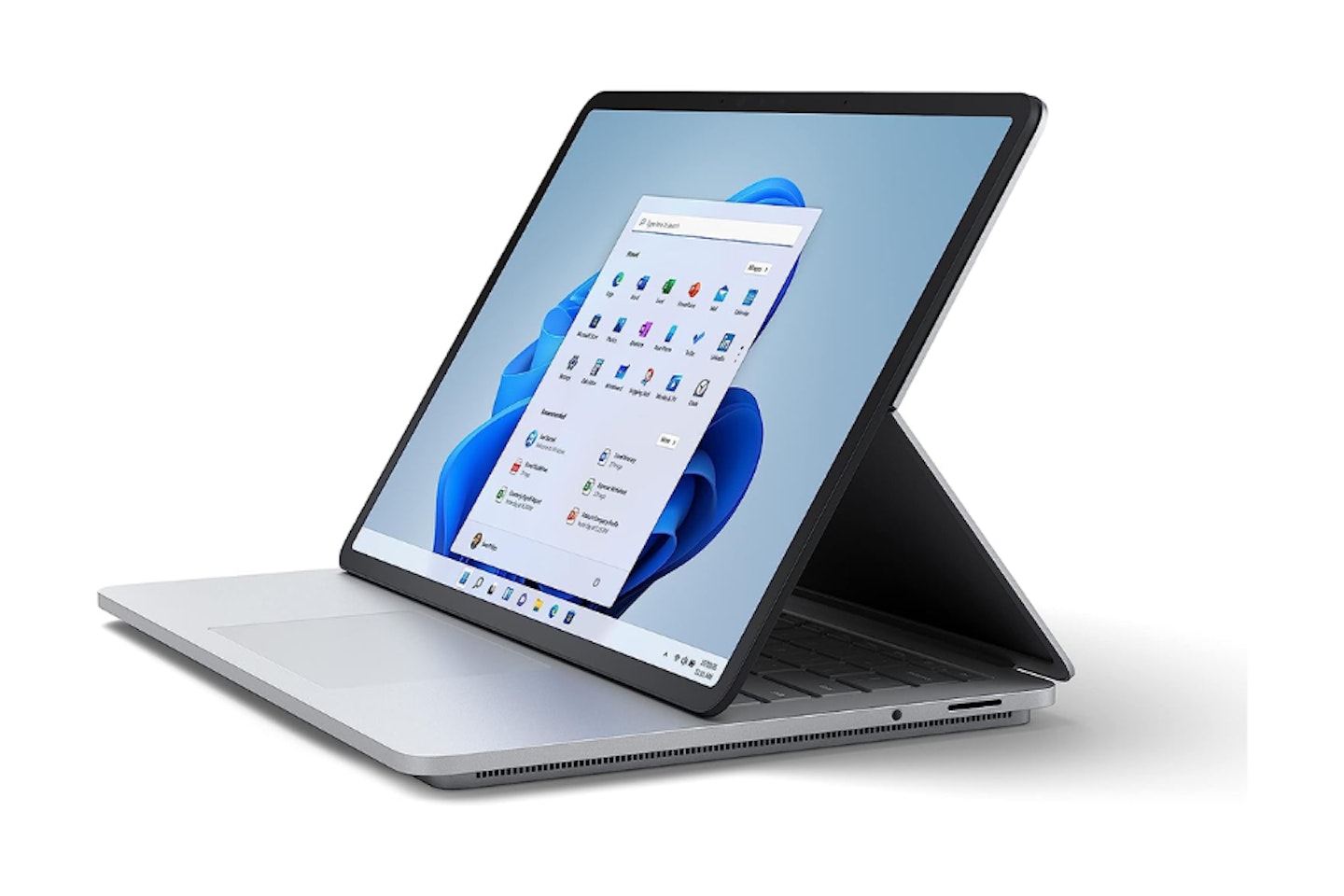Professional and budding creatives alike will spend hours poring over online reviews of the best laptop for graphic design. And that's a seriously dangerous pastime when you have a good budget burning a hole in your pocket, as the best laptops don't always make the best designer's laptop. Understanding why is all about the very precise features and functions that designers need - sometimes missing from normal laptops.
Although a laptop with touchscreen might also seem handy for design work, in many cases, a designer will want to avoid putting finger marks all over the window to their creative world. And on the subject of screens, it's probably the most crucial component of them all to get right. After all, no amount of RAM or CPU power will make up for a display that has poor colour accuracy and obtrusive reflections. So, we're here to help you find a laptop to match your artistic needs.
Best laptop for graphic design in 2023 at a glance
• Best overall laptop for graphic design: ASUS Zenbook Pro Duo OLED UX582HM - View at Amazon
• Best budget laptop for graphic design: Acer ConceptD 5 CN515-71 - View at Amazon
• Best large-screen laptop for graphic design: MSI Stealth 17 Studio - View at Amazon
• Best tablet-style laptop for graphic design: Microsoft Surface Laptop Studio - View at Amazon
Given a large enough budget, you'll be spoiled for choice. Having endless options often means gaining in one area and sacrificing in another. Thankfully, our experts have weighed much of this up for you, but you'll still need to avoid painting yourself into a corner and plumping for the wrong basic spec. Remember, a laptop deal is only a good deal if it'll enable your creativity. Design laptops are specialism, so we have a buyer's guide and more are at the end of the article.
For those of you who prefer larger screens, we have some 17-inch laptop options, as well as more compact models for designers travelling light. You'll even find a few budget-conscious options here too. We've chosen several contenders for the best laptop for graphic design and made a custom palette for you to sample. So, select that eyedropper tool and let's get creative.
Best laptop for graphic design in 2023
Best overall laptop for graphic design
When ASUS put together the concept for the ZenBook Pro Duo, it clearly had maximum creative productivity in mind. Before we get to the amazing extras they've bolted onto this design workhorse, let's look at the basics. Firstly, the screen is a 4K 15.6" OLED. Yes, you read that right - it's an absolute UHD superstar of a screen for anyone creating digital media. Even better, it's packing some excellent accreditations, with Delta-E < 2 colour accuracy, a 100% DCI-P3 colour gamut, and PANTONE Validated colour accuracy. As for the rest of the hardware, this is going to support your heavy-duty creative apps thanks to the latest Intel i9 processor and a massive 32GB of RAM.
Storage-wise, you have a healthy 1TB SSD for fast loading and saves - although for anyone working on lots of projects that generate large files we recommend investing in an external SSD. There's really only one downside to this laptop, and that's the 60hz refresh rate of the screen; that's absolutely fine for static design work but will disappoint hardcore gamers. That said, the inclusion of an Nvidia GeForce RTX 3060 will mean excellent gaming performance - just without those silky smooth 120hz refresh rates.
But now, on to the real stars of the show. The ASUS ZenBook Pro Duo comes with a seriously impressive feature set for creatives. First and foremost, there's the extra secondary touchscreen. Supported by the ScreenXpert 2 software, it's going to quickly become indispensable to most users for Adobe tool panels. That secondary screen also works with the included stylus - a real bonus for flexible working. And if you're spending time working at a large enough desk, the Thunderbolt ports will let you connect an external 8K display or even two 4K monitors. It also comes with a stand and backpack. It's not a budget model by and description but the Zenbook Pro Duo is worth every penny as a serious productivity and creativity tool for any graphic designer
Pros
- Amazing 4K OLED display with excellent colour accuracy
- Super-fast Intel i9 CPU
- Secondary touchscreen
- Huge RAM and powerful Nvidia GPU
- Included stylus, stand and backpack
Cons
- Very powerful so can get warm without proper ventilation
| Display: | 4K OLED Ultra HD 15.6" Touchscreen- 60hz / Secondary 4K tilting ScreenPad Plus |
| Graphics card: | Nvidia GeForce RTX 3060 |
| RAM / storage: | 32GB RAM / 1TB SSD |
| CPU: | Intel i9-11900H |
| Average battery life: | Around 5 hours |
| Connectivity: | WiFi, Bluetooth, 2x Thunderbolt 3 USB-C PD ports, 1x USB 3.2 Gen 2 Type-A, 1x HDMI 2.1, 1x 3.5mm Combo Audio Jack, |
| OS: | Windows 11 Home |
| Dimensions: | 35.98 x 24.92 x 2.15 cm |
| Weight: | 2.34 kg |
| Extra features: | Secondary 4K tilting ScreenPad Plus, Backlit Keyboard, Delta-E < 2 colour accuracy, 100% DCI-P3 colour gamut, PANTONE Validated for professional-grade colour accuracy, TÜV Rheinland-certified for eye care, Active Aerodynamic System Plus with an ErgoLift hinge mechanism, dual-fan setup with six heat pipes, HD camera and mic, Stylus Pen, backpack, stand |
- Customer review: "The I9 processor is a dream I use my PC for business and photo editing but not gaming so the Intel chip was the right choice for me. The colour palette is spectacular, even the screen saver is a pleasure to watch The lower screen acts for me rather like a graphics tablet used to with a Mac or PC when electronic art first became a thing. It sits at the right angle and I can avoid the keyboard most of the time."
Best budget laptop for graphic design
Okay, so at over £1500 currently, this is only classed as a 'budget' option in the context of dedicated graphic design laptops that are up to the job. Yes, you can design on any laptop, but the demands of modern design with ultra-high resolutions and resource-hungry applications mean that you're nowhere near the normal definition of budget laptops. But, in this lineup, the ConceptD 5 from Acer is the cheapest by several hundred pounds. So, just how much bang do you get for your designer's buck?
Well, once again we have a laptop with a 15.6" 4K display at 60hz - this time powered by a Nvidia GeForce 1660Ti, so while you won't be playing many games at blistering framerates, you will be more than ready for everything else. The screen has a useful anti-glare coating too. There's a respectable 16GB of RAM inside, with an Intel Core i7 processor to fuel those design applications, plus a 1TB SSD. But, how about those creative bonus features? The Acer ConceptD 5 includes 'Palette UI' that gives you quick and convenient access to colour profiles and other custom settings. Colour accuracy is well looked after too, with PANTONE Validation,100% Adobe RGB colour gamut, and Delta E <2 colour accuracy. So, you can expect your creative projects to reach new levels of visual accuracy. Acer has even thrown in three months of Adobe Creative Cloud.
Pros
- Accurate 4K IPS display
- Dedicated Nvidia GPU
- Special Palette UI for creative settings
- Solid build with metal chassis
- Three months of Adobe CC included
Cons
- 60hz refresh rate is good, but not for high-end gaming
- Although great for design, the GPU is slightly dated
| Display: | 15.6 inch 4K Ultra HD 60hz |
| Graphics card: | NVIDIA GeForce GeForce GTX 1660Ti |
| RAM / storage: | 16GB RAM / 1TB SSD |
| CPU: | Intel Core i7-9750H |
| Average battery life: | Up to 7 hours |
| Connectivity: | Bluetooth, Wi-Fi, 2 x USB-A 3.1, 1x USB-A 2.0, 1x USB-C, HDMI 2.0, LAN, mic and headphone port |
| OS: | Windows 10 Professional |
| Dimensions: | 25.41 x 36.34 x 2.31 cm |
| Weight: | 2.5 kg |
| Extra features: | Multi-gesture touch pad, Anti-glare screen, PANTONE Validated display,100% Adobe RGB colour gamut, Delta E <2 colour accuracy, 4th Gen Aeroblade 3D Fan, which runs at under 40dBA, backlit amber keyboard, three months of Adobe Create Cloud included |
- Customer review: "I am very satisfied with this laptop. The concept d has a very sharp image and all color nuances are clearly visible. Very fast, various apps such as Affinity Photo and Indesign are open, and mail, and it all works effortlessly. "
Best Apple laptop for graphic design
If you, like many creatives, prefer the Apple ecosystem then a MacBook is probably your go-to laptop option. But, here we have a souped-up 2023 Pro version with some extra bells and whistles to accelerate your design experience. For many fans of the brand, the main attraction is the legendarily good display, and this one is a 16.2" Liquid Retina screen with an adaptive refresh rate up to 120hz - the fastest on our line-up of the best. It's also one of the brightest, at 1000 nits - so you'll always be able to see your work in the brightest of environments. It's just shy of full 4K resolution, but only just.
And, all of this display goodness is backed up with 16GB of RAM and the stunningly good Apple M2 Pro processor. Apple really has carved out its own niche in terms of bespoke combined CPU and GPUs, and the M2 Pro is no exception. It has 12 cores and can deliver GPU performance up to 38 cores. So, despite having a smaller SSD than we'd like for the outlay, it's a super-solid performer for graphic designers who prioritise sheer screen quality and processing power.
Pros
- Amazingly vibrant Liquid Retina XDR display
- Lightning-fast M2 Pro processor
- Solid Apple build quality
- Excellent battery life
- Six-speaker setup sounds good
Cons
- Could do with a bigger SSD
| Display: | 16.2-inch mini-LED backlit Liquid Retina XDR display, 3456 x 2234 pixels, up to 1,000 nits. ProMotion adaptive refresh rates up to 120Hz |
| Graphics card: | M2 Pro up to 38 core |
| RAM / storage: | 16GB Unified Memory / 512GB SSD storage |
| CPU: | M2 Pro 12 core |
| Average battery life: | 22 hours |
| Connectivity: | WiFi, Bluetooth, SDXC Card slot, Headphone jack, HDMI, MagSafe charge port, 3 x Thunderbird 4 ports |
| OS: | OSX |
| Dimensions: | 1.68 cm x 35.57 cm x 24.81 cm |
| Weight: | 2.16 kg |
| Extra features: | Full HD Facetime webcam, six-speaker surround system, Keyboard with Touch ID |
- Customer review: "This laptop is absolutely amazing. The design is sleek and modern, and the build quality is top-notch. The display is simply stunning, with vibrant colours and excellent contrast. I was blown away by how crisp and clear everything looked."
Best large-screen laptop for graphic design
Laptops with displays larger than 16" can come cheap - but not if you also need it to be a professional graphic design machine. This MSI Stealth 17 is dual-branded as a Studio Gaming laptop - while that may seem like a bit of a confusing proposition, it's actually an accurate way to describe this laptop's strongest points. As you'd expect for a machine in this category, this is a 17" 4K display driven by one of the most recent and super-powerful GPUs - the Nvidia GeForce RTX 4080. So yes - this will eat AAA games for breakfast once you've finished being creative. And, that display is a Mini LED panel with 100% DCI-P3 accuracy, so you can expect beautiful colour rendition and contrast.
But the spec overkill doesn't stop there. This is packing 32GB of RAM - more than enough for your memory-hungry Adobe suits - and a whopping 2TB SSD. Plus the Intel Core i9 CPU powering it all is cutting-edge right now. The chassis is sand-blasted metal, so that MSI attention to detail extends to the case too. All in all, a stunning machine with quality to justify the higher price point.
| Display: | 17.3" UHD (3840x2160), 144Hz, Mini LED, HDR 1000, 100 nits |
| Graphics card: | GeForce RTX 4080, GDDR6 |
| RAM / storage: | 32GB / 2TB |
| CPU: | Intel Core i9-13900H |
| Average battery life: | Up to 7 hours |
| Connectivity: | WiFi, Bluetooth, 1 x Thunderbolt 4 / DP/ USB Type-C (w/ PD Charging), 1 x USB 3.2 Gen2 Type-C / DP, 2 x USB 3.2 Gen2 Type-A, 1 x SD Express Memory Card Reader, 1 x HDMI (8K@ 60Hz / 4K@ 120Hz), 1 x Audio combo jack. |
| OS: | Windows 11 Home |
| Dimensions: | 2.08 x 28.35 x 39.76 cm |
| Weight: | 5.29 Kg |
| Extra features: | 100% DCI-P3, Shared-Pipe cooler design (2 fans, 7 heat pipes), six-speaker sound system, Face Unlock, sand-blasted metal chassis and reinforced hinge, NVIDIA Studio state-of-the-art RTX GPU with AI-assisted tools |
- Customer review: "Great product, silent and high performance. I use this laptop for gaming as well as video editing."
Best tablet-style laptop for graphic design
Another machine with a name that describes a dual purpose, the Surface Laptop Studio is a typically robust product for creatives who want a laptop that functions as a mobile art studio. Build-wise, this is Microsoft's answer to a MacBook with a 14.4" Touchscreen that has a respectable 2400 x 1600 pixels to work with. But that's only the beginning of the features that make this a designer-friendly option. The panel is a PixelSense Flow touch display running at 120Hz, making it one of the few here with a touchscreen that could also provide smooth experiences for gamers. As for PixelSense, that means multitouch functionality, so you can use brushes, pens and fingertips at once.
Switching between laptop and tablet mode in the most convincing way possible, the screen folds flat in 'Studio Mode', hiding the keyboard in favour of the additional Surface Pen for hand-drawn work. Spec-wise, this laptop is more than reasonable for design work, with an 11th-generation Intel Core i7 processor and NVIDIA GeForce RTX 3050 Ti graphics card. Additional extras like Dolby Atmos and Dolby Vision make this machine perfect for entertainment once you've downed your stylus. 32GB of RAM and a 2TB SSD make the Microsoft Surface Laptop Studio a powerful and flexible choice for professionals, creatives or anyone who needs a laptop that is something of a real-life Transformer.
Pros
- Gorgeous display
- One of the most highly specced laptops for RAM and storage
- Thunderbolt 4 port for extra power and expansion
- Excellent Nvidia graphics card
- Huge battery life
Cons
- Could use a few more port options
| Display: | 14.4" Touchscreen ( 2400 x 1600 )- PixelSense Flow touch display 120Hz |
| Graphics card: | NVIDIA GeForce RTX 3050 Ti |
| RAM / storage: | 32GB / SSD 2TB |
| CPU: | Intel 11th Gen i7 |
| Average battery life: | Up to 19 hours |
| Connectivity: | Bluetooth, USB 4 with Thunderbolt support |
| OS: | Windows 11 Home - 2022 edition |
| Dimensions: | 32.33 x 22.83 x 1.89 cm |
| Weight: | 1.82 kg |
| Extra features: | Quad Omnisonic speakers with Dolby Atmos, Dolby Vision |
- Customer review: "A beautiful, fast and functional quality piece of kit. The screen is wonderful, has great resolution and is very bright. The keyboard and touchpad are a joy to use. Great battery life. very good sound quality. The build quality is exceptional and the two-in-one concept is genius. So those are my likes. There isn't really much to dislike, but there could be an improvement in increasing the number of ports."
Best high-end laptop for graphic design
In terms of high-end functionality, the ASUS ProArt Studiobook is very aptly named. The first thing to notice about this machine is the price - followed only by the spec that justifies it. There's a 16" OLED screen running at 4K resolution - that on its own is a complete deal-maker for many designers and those who want the higher resolution and beautiful colour and contrast of OLED. But, in addition, that screen is also 100% DCI-P3 colour gamut, Calman verified, PANTONE Validated, and has a Delta-E colour-accuracy value of less than 1.5. Wow.
The rest of the base spec is, frankly, total overkill - but who would turn down a machine with 32GF of RAM and a 4TB SSD. The Intel i9 14-core processor is going to make full use of all of that memory too, alongside the Nvidia RTX 3080Ti graphics card. It's not the very latest in terms of high-end gamer specifications, but still seriously impressive for gamers and designers alike.
And now on to one of the real innovations that make this a stand-out option for creatives, The ASUS Dial is an intuitive extra controller mounted just next to the touchpad. It allows instant control over the many tool settings in creative applications - such as brush size, image adjustments, and essential shortcuts. There are over 95 functions available too, with full compatibility with five Adobe apps: Adobe Photoshop, Premiere Pro, Photoshop Lightroom Classic, After Effects and Illustrator. Even the touchpad has designers in mind, as it's larger than usual, supports a stylus, and has three buttons for even smoother workflow with middle-button shortcuts. All in all, ASUS ProArt Studiobook 16 is the one to go for if you need a seriously accurate and gorgeous display with lots of workflow enhancements. Worth every penny - if you have enough of them to spare.
Pros
- Amazing quality OLED screen
- Innovative ASUS Dial
- Large stylus-compatible touchpad
- The screen has loads of colour certifications
- Great base specification
Cons
- For the price, a 40-series GPU would have been a worthy bonus
| Display: | 16" 4K 16:10 ratio, OLED, 600nits, DR 400 |
| Graphics card: | NVIDIA GeForce RTX 3080Ti |
| RAM / storage: | 32GB DDR5 RAM / 4TB SSD |
| CPU: | Intel i9-12900H 14-Core |
| Average battery life: | Around 7 hours |
| Connectivity: | WiFi, Bluetooth, 1x HDMI 2.1; 1x 3.5mm Audio Jack, SD Express 7.0 card reader, 2x USB 3.2 Gen 2 Type-A; 2x Thunderbolt 4 PD |
| OS: | Windows 11 Home |
| Dimensions: | 36.2 x 2.14 x 26.4 cm |
| Weight: | 2.05 kg |
| Extra features: | ASUS Dial, Backlit Keyboard, HD camera, three-button touchpad, 100% DCI-P3 industry-standard colour gamut, Dolby Vision, Calman verified, PANTONE Validated, and has a Delta-E color-accuracy value of less than 1.5, IceCool Pro cooling system |
- Customer review: "Screen is very good, outstanding. Calibration simple. The pen/stylus is a much better idea than drawing on the screen, has good tilt and pressure and it's small enough for edits and the hand is not obscuring drawing. Quick processing of photos and other artwork. The fans need full-speed mode for intensive work."
Best laptop for graphic design in 2023: Buyer's guide
List your creative needs first
Not every designer will be bothered with a touchscreen or even a stylus - there are plenty who use a mouse for more technical design work. Others will immediately see the benefit of a laptop which can convert into a tablet-like form. Some may need to store work with massive file sizes, and lots of it, to an equally huge internal SSD. Others may prefer a lean and lightweight machine with external storage instead. Not every designer is running the resource-hungry Adobe suite either. The point here is: Cut your cloth to fit. That way you'll be making sure you're targetting your budget into the right features for you.
Pay special attention to an included stylus or pen
If you are a digital pen user (and most creatives probably will be) you'll probably have an external graphics tablet, such as those made by Wacom. But, if you're going to one of our picks that has tablet-style functionality with a touchscreen, these will most likely come with their own pen or stylus. So, read the specs carefully. For design this should be an 'Active Stylus' - They offer superior functionality, including excellent precision and, in many cases, pressure sensitivity. As a result, they can be used for writing, annotating, illustrating, or any other advanced graphics tasks.
Don't skimp on the essentials
Larger price tags really come with the territory when it comes to the best laptop for graphic design. After you've ensured you've got a ton of RAM, a stack of SSD space, and a large screen, it's really tempting to forget about the simple essentials. Yes, screens should be large enough to work on with excellent colour accuracy, but without an anti-glare coating and good viewing angles, you'll be cursing the day you bought it.
Always check and double-check any laptop specifications against the needs of any particular software you use. All of our picks have their strengths and weaknesses when it comes to software and hardware capabilities. Lastly, RAM and graphics card capabilities are only half of the story - keep an eye on the CPU specification. They're never a good read, but the difference between an Intel Core i3 and a Core i7 could be the difference between being able to work smoothly or not being able to work at all.
Protect it from damage and dirt
Aside from getting a robust laptop backpack or an impact-proof case to protect your gorgeous new design tool, it's essential to invest in some simple laptop care accessories. One such addition is a screen cleaning kit - especially important for keeping your view of your work smudge and dust-free. Touchscreens are, of course, really prone to marks - even if you use a stylus religiously.
Privacy: Consider a VPN
If you're using the best laptop for graphic design it stands to reason you may also be a professional. That means that your laptop is your livelihood, so definitely look for security suites such as Bitdefender or McAfee if you don't have one. However, that will only protect you against threats to your machine - but what about your privacy and personal data? A VPN (Virtual Private Network) is a secure tunnel to the internet that hides your IP address as you go about your online business. That means that would-be data snoopers can't identify you or your location and your incoming and outgoing data is secure. Our experts highly recommend getting an affordable VPN for extra security.
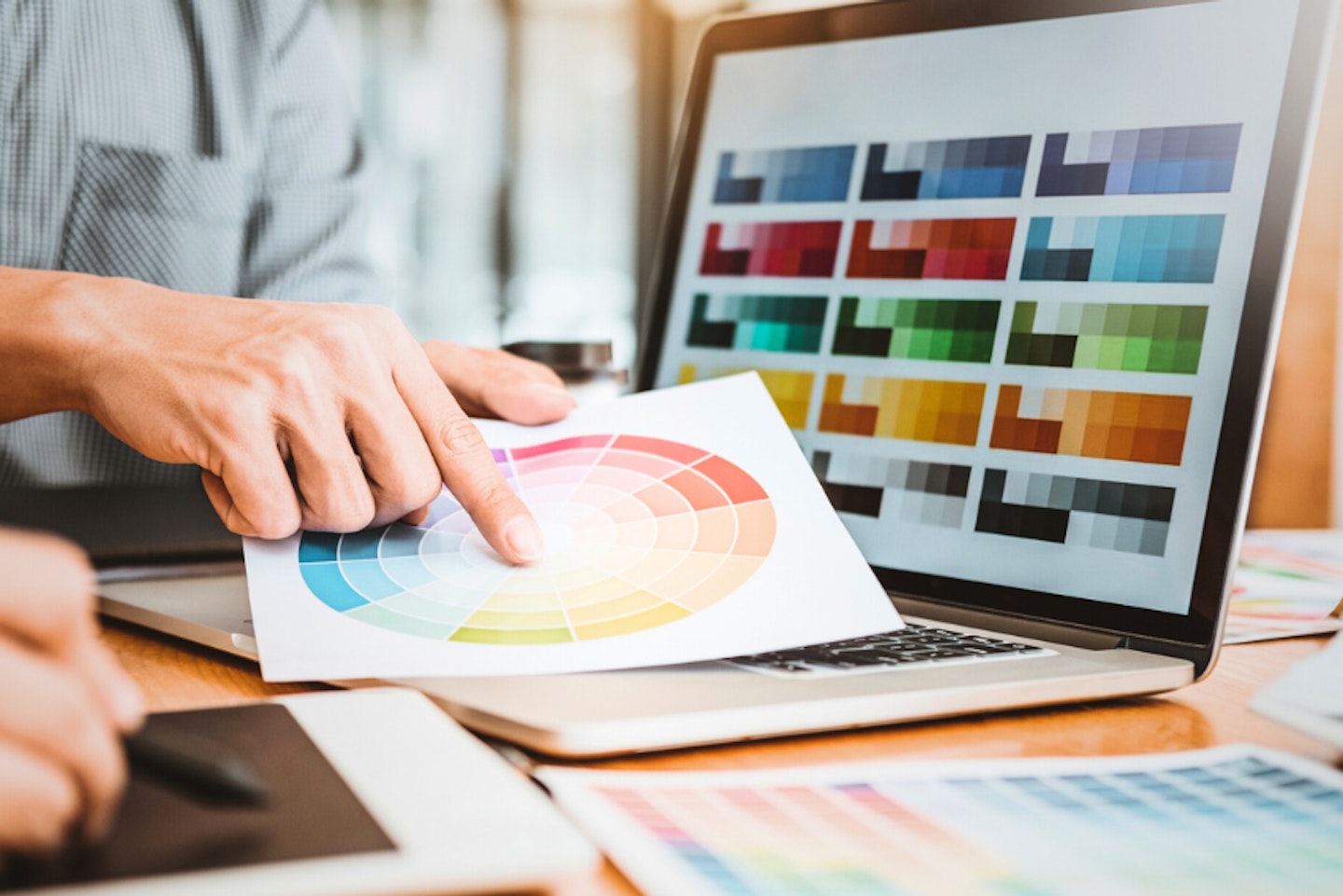
Best laptop for graphic design in 2023: Frequently asked questions
Are laptops for graphic design worth it?
Yes, there's no doubt that any professional designer or creative hobbyist will reap the rewards of the right design laptop. Over and above the high-end machine specs needed (and the ability to draw fluidly and accurately) specialised additions also make a huge difference. Features like extra screens for control panels and tools, being able to fold the screen back completely for a more tablet-like experience, and colour-accurate high-res screens are indispensable.
Can you do graphic design on any laptop?
Yes - and no. While the vast majority of laptops running Windows, ChromeOS or MacOS will support and run popular creative applications, that doesn't mean they'll work well enough. Unless you've chosen wisely, the screen may have terrible colour accuracy, poor viewing angles and a low native resolution. The RAM and CPU may also not be up to scratch, turning your carefully considered airbrushing into jagged lines with lots of lag.
The harder you push any laptop, especially with graphic design applications, the slower and more unusable they will become. They're resource-hungry programs too. So, while more basic apps exist that might run on a substandard laptop, you're not likely to get the functionality and features you need.
Do all laptops for graphic design come with a stylus?
No, these are most common with touchscreen laptops, some of which fold into a more tablet-like form. But even some of those only support third-party styluses. Also, be wary of laptops that come with simple versions. Unless they're the 'Active' type (more on that in our FAQs below) they probably won't be pressure-sensitive - an essential feature for designers.
Unless your choice of the best laptop for graphic design is super-high-end, we always recommend going for a separate drawing tablet, such as the Wacom Intuos Pro. They're pressure-sensitive and come with a range of nibs and advanced settings that work with popular creative apps.
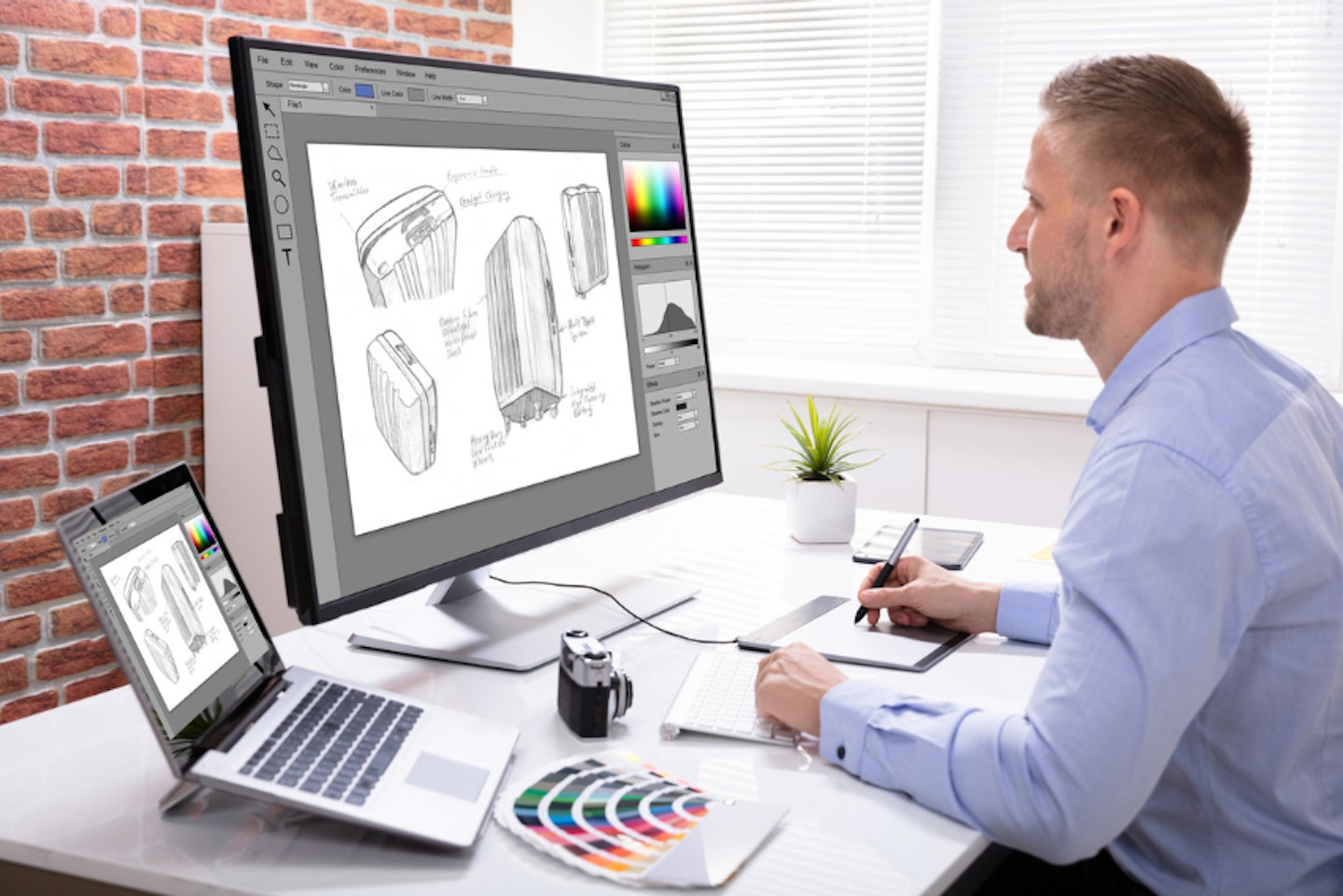
Best laptop for graphic design in 2023: Jargon buster
HDR
A screen that supports HDR - or High Dynamic Range - will benefit from higher contrast levels and a wider colour palette than standard screens. This means over a billion colours are available instead of the roughly 16 million colours that you get without HDR.
HDR comes in slightly different flavours with HDR (HDR10) and HDR10+ being closely related; each has a slight improvement over the other.
Colour gamut
The colours in a digital image are rendered in a certain colour range; most commonly sRGB, Adobe RGB and P3. The closer a monitor can matching these standards, the more accurate your laptop screen will be for design work. When that work is printed, it's going to look much closer to the original design.
Aim for a higher percentage for the gamut you think is more suited to you. 100% is the ideal figure and will give the most realistic colour display. That's why designers prefer monitors that are calibrated or certified to universal colour standards, like sRGB or Adobe RGB and other colour certifications.
Resolution
Resolution is the number of pixels on a display, expressed as height x width. The greater the number of pixels, the sharper the detail of the image. Some of the more common ones are below, but for a more comprehensive view, read our guide to TV and monitor resolutions.
HD = 720p - 1280 x 720 pixels
Full HD = 1080p - 1920 x 1080 pixels
Quad HD (QHD) = 1440p - 2560 x 1440 pixels, often referred to as 2K
4K UHD = 2160p - 3840 x 2160 pixels, also referred to as ‘Ultra HD resolution’
Refresh Rate
This is the number of times the screen refreshes the entire displayed image, per second. Measured in Hertz (Hz) a 60Hz laptop screen will refresh an image 60 times, and a 120Hz screen will refresh an image 120 times. Therefore, the higher the refresh rate, the smoother the moving image appears to the eye. This is particularly important for gamers, designers using a stylus pen, or those who edit videos.
Solid State Drives (SSD)
Older thicker laptops housed a regular spinning disk hard drive. Thankfully, SSDs are newer technology that uses no moving parts. It's faster, a lot smaller in size and runs more efficiently, which is why you'll find them in the majority of modern laptops. They write and read using electronic flash memory, much like USB flash drives. Data is stored in grids and blocks. The available space is utilised more efficiently too.
CPU
A Central Processing Unit, or CPU, processes and executes instructions. They often consist of multiple cores - the higher the number of cores the more processes it can carry out, improving performance. CPUs have a 'clock speed' that is measured in GHz - the frequency of the number of operations. In theory, the higher the GHz number, the better and quicker a computer can operate.
RAM
Random Access Memory, or RAM, is short-term memory. It temporarily holds information for quick access by the CPU as it runs various programs and services. The more RAM available, the more quick-access information there is for the CPU, thereby improving computer performance.
GPU
A GPU is a Graphical Processing Unit - the central component of a graphics card. It handles the rendering of images to the computer screen
Chris Duffill is a Tech Product Writer for What's The Best. He specialises in audiovisual, computing, and gadgets. He also writes for Yours.
Subscribe to the What’s The Best Newsletter to keep up to date with more of the latest reviews and recommendations from the rest of the What’s The Best team.


